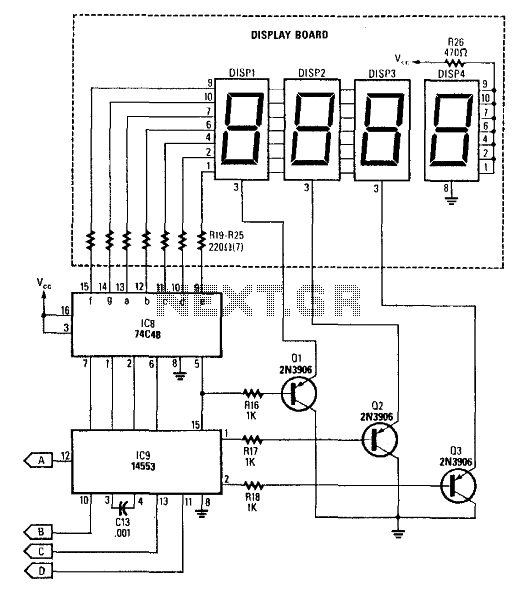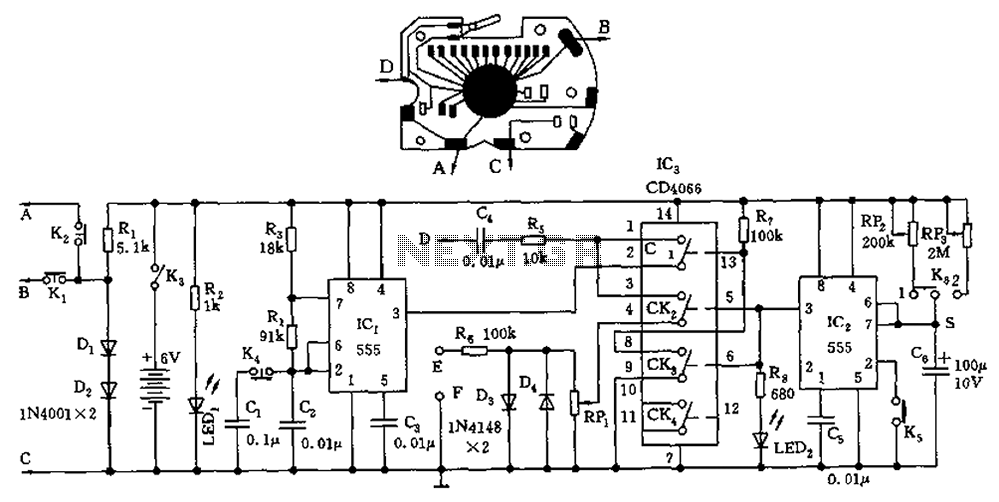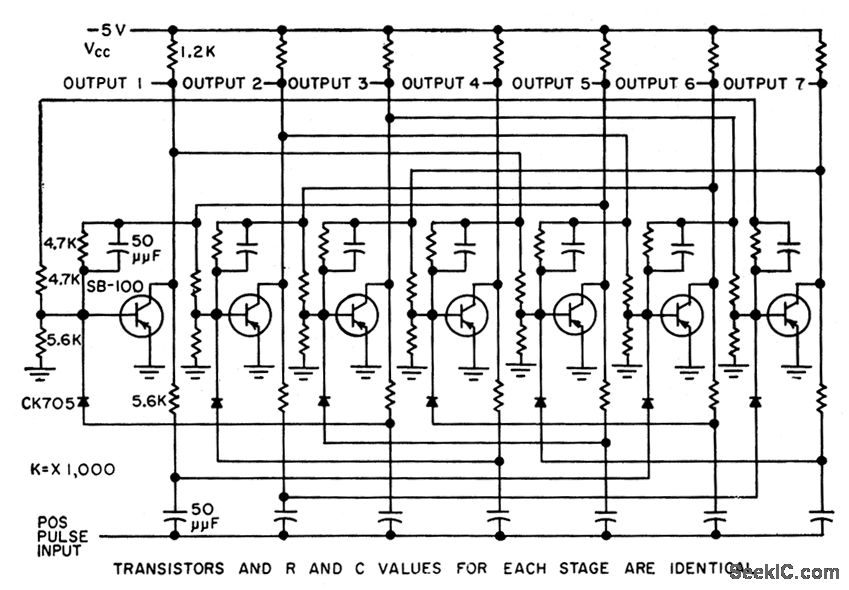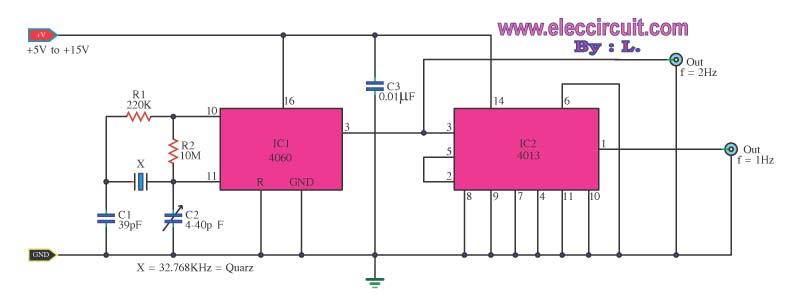
Digital Tachometer Counter

This circuit produces a readout for the digital tachometer circuit. IC9 is a 3-digit LED display driver, counter, and latch. IC8 drives the common-cathode LEDs, which are enabled by Q1, Q2, and Q3. See page 268, Fig. 46-5 for the matching project.
The described circuit is designed to provide a visual display of rotational speed in a digital tachometer application. The core component, IC9, serves as a multifunctional device that integrates a 3-digit LED display driver, a counter, and a latch. This allows for the accurate counting of input pulses generated by a sensor that detects the rotation of a shaft, converting these pulses into a readable digital format.
IC8 is responsible for driving the common-cathode LEDs, which illuminate the display. The common-cathode configuration indicates that each LED's cathode is connected to ground, while the anodes are driven high by IC8 to turn on the respective segments of the display. The enabling transistors, Q1, Q2, and Q3, act as switches to control the power to the LED segments, ensuring that only the relevant segments are illuminated based on the counter's output.
In conjunction with these components, the circuit may include additional elements such as resistors to limit current through the LEDs, capacitors for filtering, and potentially diodes for reverse voltage protection. The design also incorporates feedback mechanisms to ensure stable operation and accurate readouts. The reference to page 268, Fig. 46-5 suggests that there is a related project or schematic that may provide further insights into the implementation and functionality of this tachometer circuit. This circuit produces a readout for the digital tachometer circuit. IC9 is a 3-digit LED display driver, counter , and latch. IC8 drives the common-cathode LEDs, which are enabled by Ql, Q2, and Q3. See page 268, Fig. 46-5 for the matching project. 🔗 External reference
The described circuit is designed to provide a visual display of rotational speed in a digital tachometer application. The core component, IC9, serves as a multifunctional device that integrates a 3-digit LED display driver, a counter, and a latch. This allows for the accurate counting of input pulses generated by a sensor that detects the rotation of a shaft, converting these pulses into a readable digital format.
IC8 is responsible for driving the common-cathode LEDs, which illuminate the display. The common-cathode configuration indicates that each LED's cathode is connected to ground, while the anodes are driven high by IC8 to turn on the respective segments of the display. The enabling transistors, Q1, Q2, and Q3, act as switches to control the power to the LED segments, ensuring that only the relevant segments are illuminated based on the counter's output.
In conjunction with these components, the circuit may include additional elements such as resistors to limit current through the LEDs, capacitors for filtering, and potentially diodes for reverse voltage protection. The design also incorporates feedback mechanisms to ensure stable operation and accurate readouts. The reference to page 268, Fig. 46-5 suggests that there is a related project or schematic that may provide further insights into the implementation and functionality of this tachometer circuit. This circuit produces a readout for the digital tachometer circuit. IC9 is a 3-digit LED display driver, counter , and latch. IC8 drives the common-cathode LEDs, which are enabled by Ql, Q2, and Q3. See page 268, Fig. 46-5 for the matching project. 🔗 External reference





